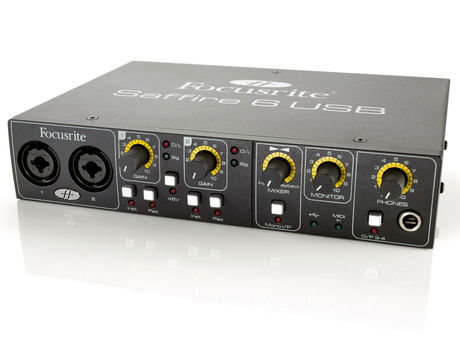On the amateur level, most of the interfaces are differentiated by..
- USB 1 vs USB 2 vs Firewire - Mine is USB 1 but most people seem to recommend USB 2. For amateur use, firewire is overkill (if your laptop even supports it). You also get PCI interfaces, which won't work on a laptop.
- Inputs: Most will have at least 2. Check that it can support instrument level input. Most should.
- Phantom power - Useful if you have/plan on using a condenser mic
- Quality of preamp.
- Midi in/out. Almost all interfaces will have this.
- Outputs... I only ever use the monitor output but the RCA output was useful once. Depends on what you want to use the interface for.
- Latency
It depends on what you want to do with the interface. Most likely you want to record 1 track at a time for things like GFSA comps, home demo's and whatnot. Many different companies make interfaces aimed at this range, they even look the same:
M Audio:

Saphire 6:

Edirol:

In this range the M-Audio fast track range seems to be the most popular, but you can't really go wrong with most of the others. Just google it and read a few reviews as you should for any piece of gear. I have a focusrite saphire 6 usb which I am 100% happy with. These kinds of interfaces go for about R2000 and you can do a lot with them... I think you're only limited once you want to start recording drums where you need a lot of inputs at once.
As for your midi concerns - the interface has nothing to do with how the instrument sounds. MIDI information just says 'Play note C0 for 1 beat at 100 velocity' and can then be used for any instrument. Crappy sound cards have crappy sound synthesizers. Once you have your interface you should get something like Reaper set up to record and use VST's for virtual instruments, then you can use high-quality softsynths and customize how it sounds. Which is quite a lot of fun ?